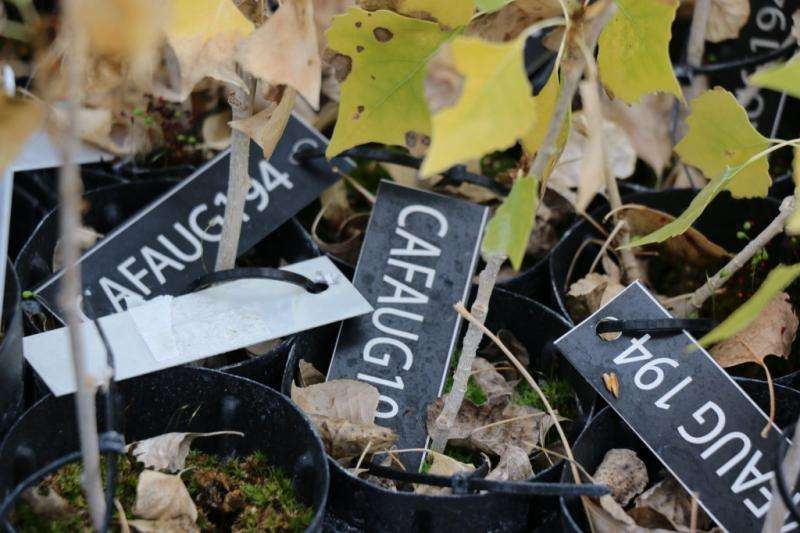Researcher calls southwestern foundation species too big to fail

When a tree species supports more than 1,000 animals, birds, insects and microbes, the tree type can be considered too big to fail. "Cottonwoods are the General Motors of the plant world because they define a community and an ecosystem," said Tom Whitham, Regents' professor of biological sciences. Whitham's genetics-based research is designed to conserve cottonwoods in the face of climate change.
In the southwestern United States, Fremont cottonwoods grow at sea level up to elevations of 6,600 feet. These are often the dominant trees of riparian habitats. Although riparian habitat makes up less than three percent of the landscape, it is a hot spot of biodiversity and supports nearly 50 percent of the birds that nest in the region.
Analyzing cottonwoods has become part of the Southwest Experimental Garden Array, a project with multiple growing sites. Whitham, a SEGA principal investigator, said the project is creating a significant database with a goal of identifying genes responsible for plants' drought tolerance, productivity, disease resistance, water use efficiency and diversity.
"By having these plants from sites around the state, we can identify the plants that will tolerate a three or a six degree increase in temperature," Whitham said. "This allows us a very experimental way to identify the source populations that can survive future climatic conditions."
Whitham and other scientists think this conservation strategy is especially important to keep foundation species in the landscape during climate change.
Gathering data on the natural genetic variations that exist in the wild can inform restoration decisions. When tasked with restoring an area, Whitham said replanting with local tree genotypes adapted for today's climate would likely not survive projected future climatic conditions in a rapidly changing environment.
The big data generated by the Southwest Experimental Garden Array is shared with numerous land management agencies throughout the region where the experimental forests and gardens are planted. This sharing of information is critical and time sensitive, Whitham said.
"Historically, there has been a very long lag time between basic research and implementation into management practice and we can no longer afford to do it that way," Whitham said. "With the rates of climate change, there needs to be a seamless integration between the scientific findings and land management applications."
This practice has already been achieved in agriculture, where a similar approach has changed management practices with soil scientists, plant geneticists and climatologists working together to increase crop production. Whitham said it makes sense to apply similar principals to wildlands, but with different goals of maintaining healthy ecosystems and high biodiversity.
Provided by Northern Arizona University




















